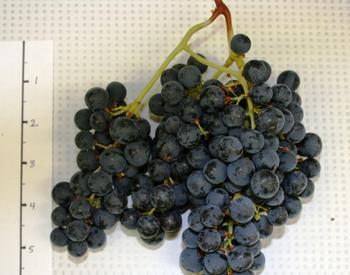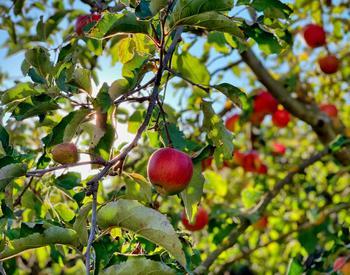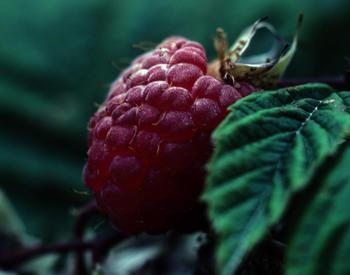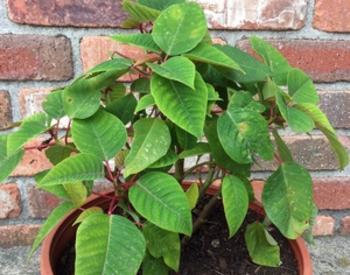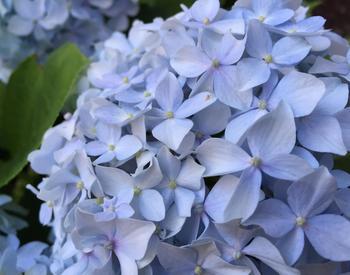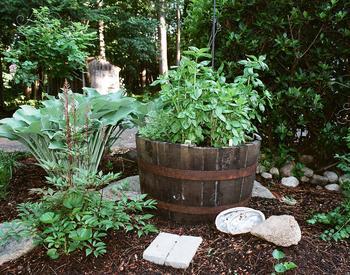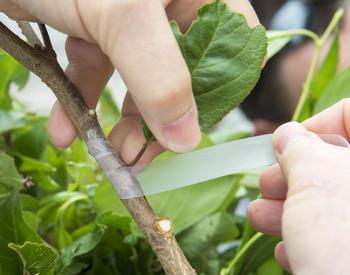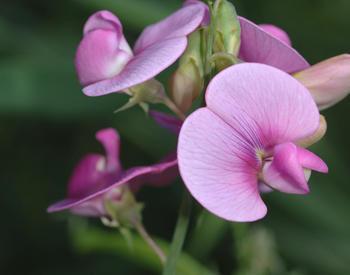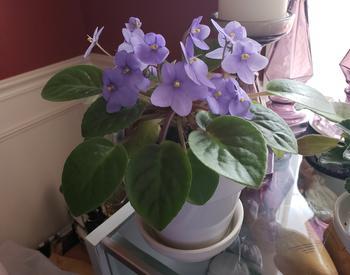Successful control of pests using chemicals depends on many factors including choice of material, application timing, application frequency, and coverage.
Early season sprays are timed for stage of bud/fruit development. See the accompanying diagram showing bud stages. Spring through summer sprays are timed by pest development. For information on current season pest emergence and determining when to initiate pesticide applications, contact your local OSU Extension Service Office.
This guide includes pesticides currently registered for home use that have a reasonable chance of controlling the pests listed if applied at appropriate times with adequate frequency, and sufficient coverage. Other materials are available that will provide suppression of these pests under conditions of low pest pressure but probably will not provide sufficient control under local conditions. Pesticides are listed by active ingredients. Consult the attached list of pesticide products for controlling fruit tree pests and diseases for brand name products containing these active ingredients.
Use appropriate personal protective equipment and handling procedures to avoid exposure with all pesticides.
Use only one material except where a combination is indicated. Follow all pesticide label instructions, precautions and restrictions.
Pest management strategies by fruit type
Apple
| Pest or Disease | Stage or Time | Material or Practice |
|---|---|---|
| mites, scale, leafroller | 1-2 (delayed dormant) | horticultural mineral oil and wettable sulfur or lime sulfur1 |
| scab, powdery midlew | 3-4 (prepink) | wettable sulfur or lime sulfur1 |
| scab, powdery mildew | 5-6 (pink), petal fall | myclobutanil, wettable sulfur, or lime sulfur1 |
| codling moth (most important) | spring-summer until fruit is harvested or mid-August whichever is first) |
acetamiprid, carbaryl, granulosis virus, spinosad horticultural mineral oil at 200, 400, 600, 1200, 1350 & 1500 degree days horticultural mineral oil at above schedule then bagging |
| apple maggot (most important) | Mid-July through harvest | fruit bagging or spinosad or carbaryl applications starting mid-July will control apple maggot |
| general sanitation | Post harvest | collect and dispose of groundfall or unused fruit; remove & destroy diseased branches |
| anthracnose | Post harvest | fixed copper |
| scab | leaf fall | rake & destroy leaves |
Pear
| Pest or Disease | Stage or Time | Material or Practice |
|---|---|---|
| pear psylla, mites, scale, leafroller | 0 (dormant) | horticultural mineral oil and wettable sulfur or lime sulfur1 |
| pear psylla, mites, scale, leafroller | 1-2 (delayed dormant) | horticultural mineral oil and wettable sulfur or lime sulfur1 |
| scab, powdery mildew | 3-5 (pink) | wettable sulfur or lime sulfur1 |
| scab, powdery mildew | petal fall | wettable sulfur or lime sulfur1 |
| codling moth (most important) | spring-summer until fruit is harvested or mid-August (whichever is first) |
acetamiprid, carbaryl, granulosis virus, spinosad horticultural mineral oil at 200, 400, 600, 1200, 1350 & 1500 degree days horticultural mineral oil at above schedule then bagging2 |
| general sanitation | postharvest | collect and dispose of groundfall or unused fruit; remove & destroy diseased branches |
| scab | leaf fall | rake & destroy leaves |
Cherry
| Pest or Disease | Stage or Time | Material or Practice |
|---|---|---|
| aphids, leaf rollers, mites, scale | 0-3 (dormant to delayed dormant) | horticultural mineral oil |
| brown rot blossom blight | 4-5 (popcorn), 7 (full bloom) | chlorothalonil, myclobutanil, propiconazole, wettable sulfur |
| (most important) western cherry fruit fly spotted wing Drosophila | spring-summer until all fruit is harvested | carbaryl, malathion, spinosad |
| powdery mildew | shuck fall, summer |
myclobutanil, horticultural mineral oil, propiconazole, wettable sulfur |
| brown rot fruit rot (if rain is forecasted) | preharvest | myclobutanil, propiconazole, wettable sulfur |
| general sanitation | postharvest | collect and dispose of groundfall or unused fruit; removed & destroy diseased branches |
| brown rot | leaf fall | Remove and destroy mummy fruit |
Peach & Nectarine
| Pest or Disease | Stage or Time | Material or Practice |
|---|---|---|
| shot hole, peach leaf curl | 0 (dormant) | chlorothalonil, fixed copper or lime sulfur1 |
| aphids, mites, scale | 1 (delayed dormant) | horticultural mineral oil |
| brown rot blossom blight | 2-5 (prebloom), 6-7 (full bloom) | chlorothalonil, myclobutanil, propiconazole, wettable sulfur |
| powdery mildew | shuck fall | myclobutanil, horticultural mineral oil, propiconazole, wettable sulfur |
| shothole | shuck fall | chlorothalonil, myclobutanil |
| powdery mildew | summer | nyclobutanil, horticultural mineral oil, propiconazole, wettable sulfur |
| peach twig borer | summer | spinosad |
| spotted wing Drosophila | preharvest | spinosad, carbaryl |
| brown rot fruit rot (if rain is forecasted) | preharvest | myclobutanil, propiconazole, wettable sulfur |
| general sanitation | postharvest | collect and dispose of groundfall or unused fruit; remove and destroy diseased branches |
| brown rot | leaf fall | remove and destroy mummy fruit |
| peach leaf curl | leaf fall | chlorothalonil or lime sulfur1 |
| shothole | leaf fall | chlorothalonil or lime sulfur1 |
Plum & Prune
| Pest or Disease | Stage or Time | Material or Practice |
|---|---|---|
| aphids, mites, scale | 0-3 (dormant to delayed dormant) | horticultural mineral oil |
| brown rot blossom blight | 4-5 (popcorn) | chlorothalonil, myclobutanil, propiconazole, wettable sulfur |
| brown rot blossom blight | 7 (full bloom) | chlorothalonil, myclobutanil, propiconazole, wettable sulfur |
| brown rot blossom blight | shuck fall | chlorothalonil, myclobutanil, propiconazole, wettable sulfur |
| spotted wing Drosophila | preharvest | spinosad, carbaryl |
| brown rot fruit rot (if rain is forecasted) | preharvest | myclobutanil, propiconazole, wettable sulfur |
| general sanitation | postharvest | collect and dispose of groundfall or unused fruit; remove & destroy diseased branches |
| brown rot | leaf fall | Remove and destroy mummy fruit |
Apricot
Never spray apricots with any sulfur containing pesticide.
| Pest or Disease | Stage or Time | Material or Practice |
|---|---|---|
| shot hole | 0 (dormant) | chlorothalonil, fixed copper |
| aphids, mites, scale | 1 (delayed dormant) | horticultural mineral oil |
| brown rot blossom blight | 2-5 (prebloom) and 6-7 (full bloom) | chlorothalonil, myclobutanil, propiconazole |
| shothole | shuck fall | chlorothalonil |
| brown rot fruit rot | summer | myclobutanil, propiconazole |
| powdery mildew | summer | myclobutanil, propiconazole |
| spotted wing Drosophila | preharvest | spinosad, carbaryl |
| brown rot fruit rot (if rain is forecasted) | preharvest | myclobutanil, propiconazole |
| general sanitation | postharvest | collect and dispose of groundfall or unused fruit; remove & destroy diseased branches |
| brown rot | leaf fall | remove and destroy mummy fruit |
| shot hole | leaf fall | chlorothalonil, fixed copper |
Details for management of most important pests
Codling moth
Codling moth control will require multiple spray applications. Successful control requires thorough coverage of all leaf and fruit surfaces. The frequency of application or spray interval is specified on the product label but generally ranges from 7 to 10 days for these pesticides.
Fruit bagging is a non-chemical approach to codling moth and apple maggot control that can be very successful. Bagging may not be practical on large trees and must be completed before codling moth egg-laying begins (usually late April). One or more well-timed oil sprays followed by bagging may be an effective program for codling moth. For more information ob bagging see: Codling Moth Management Guide from UC IPM.
Spotted Wing Drosophila and Western cherry fruit fly
Pesticide applications are made to protect fruit from egg-laying adult flies and should generally be initiated when fruit begins to change to ripe color. For information on current season pest emergence and determining when to initiate pesticide applications, contact your local OSU Extension Service Office.
Successful control requires thorough coverage of all leaf and fruit surfaces and will likely require multiple spray application. The frequency of application or spray interval is specified on the product label but generally ranges from 7 to 10 days for these pesticides. Collect and destroy fruit remaining on tree after harvest to prevent infestation if spray program has been discontinued.
Apricot, peach, plum, prune, and nectarine are likely to be attacked if allowed to tree ripen. One or two spray applications starting when fruit begins to change to mature color should provide control. Repeat application at interval specified on the product label.
Home use pesticides for controlling fruit tree pests & diseases
- acetamiprid - Ortho flower fruit & vegetable insect killer
- carbaryl (Sevin) - many products, e.g. Garden Tech Sevin
- chlorothalonil - Ortho Max Garden Disease Control; Monterey Fruit Tree, Vegetable & Ornamental Fungicide
- copper - Monterey Liqui-cop; Lilly Miller Mictrocop, Kop-R-Spray
- granulosis virus (codling moth) - Cyd-X available from Peaceful Valley Farm Supply
- horticultural mineral oil - Monterey Saf-T- Side
- lime sulfur1 - Lilly miller polysul
- malathion - many products, e.g. Bonide Malathion insect control
- myclobutanil - Spectracide immunox
- propiconazole - Monterey Fungu-Fighter
- spinosad - Monterey garden insect spray
- wettable sulfur - many products, e.g. Bonide micronized sulfur
Other resources
- For detailed information on fruit free pests, and diseases see the PNW Pest Management Handbooks.
- Monitoring supplies available from Great Lakes IPM
Use pesticides safely!
- Wear protective clothing and safety devices as recommended on the label. Bathe or shower after each use.
- Read the pesticide label—even if you’ve used the pesticide before. Follow closely the instructions on the label (and any other directions you have).
- Be cautious when you apply pesticides. Know your legal responsibility as a pesticide applicator. You may be liable for injury or damage resulting from pesticide use.

